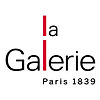Cédrix Crespel
SELECTED WORKS
Deep Pola
Deep Pola is a series of paintings inspired by the Polaroids of Crespel’s wife and muse, Tiphaine. This series is a conversation between the couple: Tiphaine, a photographer, transforms herself through her lens into an object of desire; Crespel, a painter, divulges himself through his brush. The result is what they have managed to reconcile in their daily life as a couple. Without tricks and aesthetic pretence, Tiphaine’s photography is sincere and immediate; On the other hand, Crespel’s romanticism injects imagination into every detail of his paintings.
Through his work, Crespel examines the representation of women in society. His paintings are likened to a sensual odyssey; he depicts images of independent and passionate women who really defy what society expects from them.
On his canvas, Crespel’s brush shifts from wide-angle or ‘mise en scène’ to details, gestures, shapes, movements and colours. Form gives way to sensations, and Crespel frees the canvas from excessive and diluted stories to insist on one single element that he complements with colours and sensory stimulators. He abandons wide shots and narrows his frames to clear himself from resemblance or plausibility. He becomes obsessed with formalising a balance that matches the tone that Tiphaine’s Polaroids inspire him. Crespel immerses himself physically in his art, without being inhibited by conceptual, semantic and rational concerns.

Cedrix Crespel
ABOUT THE ARTIST
Cédrix Crespel was born in France in 1974, and he currently lives and works in France. Fashion and pop culture are major influences on French multidisciplinary artist Cédrix Crespel’s work. And so are women, in particular his wife and muse, Tiphaine.
An emblematic artist of a generation from a culture open to his time, Crespel examines the representation of femininity, which he strives to translate in a contemporary way. In the mid-1990s, aware of the need for an artist to be rooted in his culture, he very quickly abandoned academic drawing, leaving the pencil and its line, to invent a figurative language from the ‘computer’ generation.
Crespel therefore brings computers into the process, sketching onto the screen what he will later develop on canvas. Bringing back the tradition - and therefore the past - back to the specificity of the present. The elegance of the gesture, translated by a vascular trace with vibrating flat colors, suggests the curves but also the sensations of the artist’s relationship to his muse.
Crespel’s painting is comparable to a sensuous odyssey. The artist displays a range of independent and passionate women who really defy what society expects from them. One way or another, he shows us how to get rid of our habits in order to enter a world where the invisible comes to light. From the desire’s tension to his haunting obsessions, Crespel suggests sex through sensuality, or the opposite. Relentless, rebellious, puckish, Crespel’s women reinvent the love conventions and assume their modern femininity.
Crespel has taken part in numerous international art exhibitions and fairs in France and abroad.













